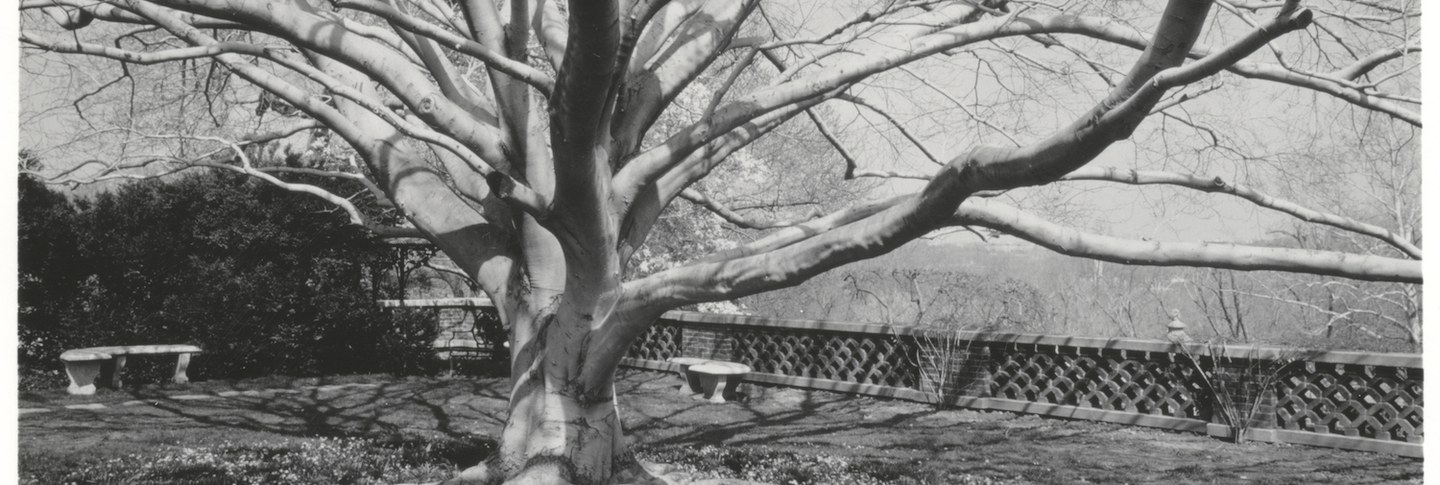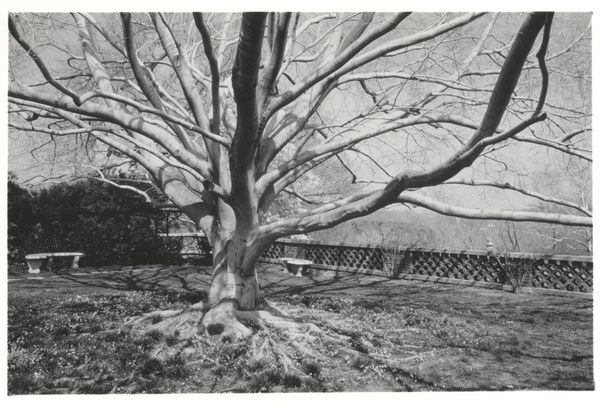In 1922 when Beatrix Farrand drew up her first designs for the gardens, a stately River’s purple-leaved English beech grew northeast of the Orangery. The beech was original to the property and already so large that it dominated its space. Farrand admired the tree and planned the terrace to highlight it. When the pierced-brick balustrades and retaining walls were built between each terrace level, Farrand made sure that the wall separating the Beech Terrace from the Urn Terrace to the east did not disturb the beech’s extensive root system.
The beech dominated the terrace, not only due to its immense size and dark purple leaves, but also as Farrand said in the Plant Book, because “it is notoriously hard to make anything grow under a Beech tree.” The webbing of roots combined with deep overhead shade made it difficult for groundcover to flourish. Farrand tried periwinkle, ivy, and honeysuckle, along with a few spring bulbs like snowdrops and scilla. At the borders, and especially along the footpath, she planted small box bushes. In the 1960s, much of the box on the western edge of the terrace was replaced with a bed of ivy, and turf replaced the struggling ground cover. By this time, the nature of the Beech Terrace had changed quite significantly due to the death of the original beech. The dark purple-leaved English beech died in the late 1940s, and a green-leaved American variety took its place.
The change in leaf color and size of the beech made an impact on the terrace because the central tree truly dominates the design. In addition to the very simple plantings, Beatrix Farrand and Mildred Bliss planned very little garden ornament for the space. In 1934–35, Farrand designed a delicate swing seat with a lead canopy, and it was placed in the northeast corner. A Weeping Higan Cherry, boxwood, winter jasmine, and ivy framed the swing. Unfortunately, the swing proved too much a temptation to young visitors, and the swinging seat was replaced with a wooden bench in the 1970s.

